The (Real) History of Thanksgiving
Thanksgiving brings families together to share rich meals featuring turkey, stuffing, and seasonal décor like pumpkins and warm autumn colors.
Errika Gerakiti 28 November 2024
It’s thanks to the Victorians that the tradition of sending Christmas cards exists. The very first commercial Christmas card was sent in 1843, and we are still following the trend 180 years later. Some designs of Victorian Christmas cards are classics that have endured the test of time, while others may seem baffling to look at now!
The British businessman and inventor Sir Henry Cole created the first commercial Christmas card. Founding director of the Victoria and Albert Museum, Cole was also heavily involved in reforming the British postal system.
To save time on unanswered mail during the busy festive period, Cole commissioned friend and artist John Callcott Horsley to design a Christmas-themed card. 1000 cards were printed: copies that Cole didn’t use himself were then sold to the public.
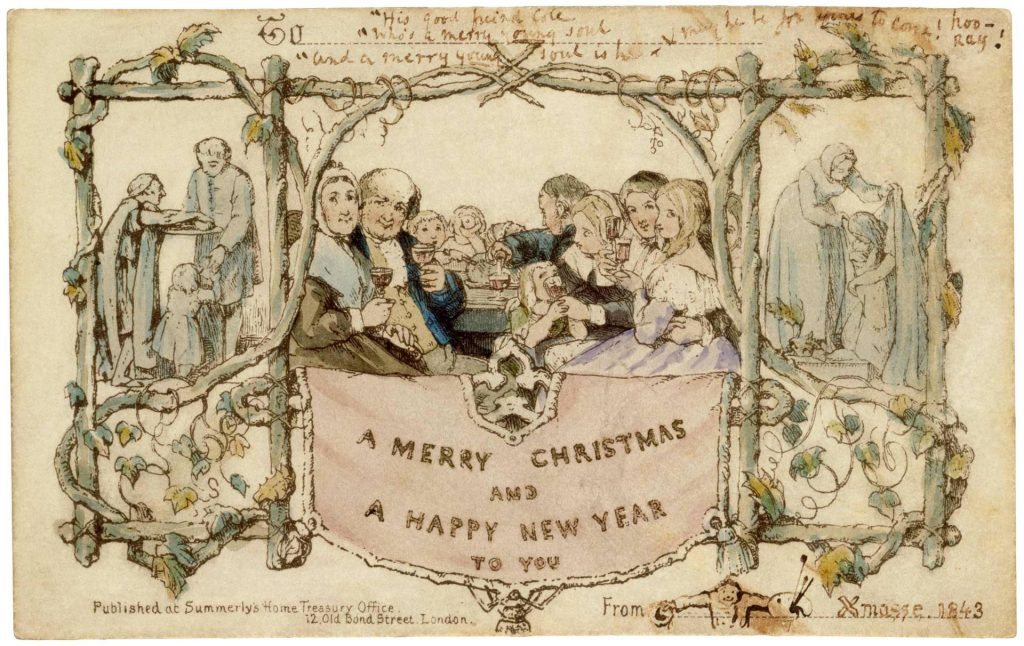
John Callcott Horsley, Greeting card, 1843, England, Victoria and Albert Museum, London, UK.
Just published. A Christmas Congratulation Card: or picture emblematical of Old English Festivity to Perpetuate kind recollections between Dear Friends.
Advert of the first commercial Christmas card, Courtesy of The Postal Museum.
In the satire magazine Punch, Horsley earned the nickname “Mr J. C(lothes) Horsley” in reference to his protests against artists using nude models.
While his Christmas card does feature “clothing the naked” as an act of charity, there are no such traces of puritanism in the design. It shows members of the Cole family, including children, sharing a toast as they celebrate the holiday.
The price of this card was expensive at the time: a shilling for each copy, which would be a discouraging purchase for many families. But even though Cole’s Christmas card was not commercially successful, it wouldn’t take long for the idea to grow in popularity.
Previously, Christmas and its associated traditions had a contentious history in Britain. It was banned by Oliver Cromwell and his Puritan Parliament in 1647, eventually brought back in 1660. However, by the 1790s, public interest in Christmas was waning.1
Thankfully, the novella A Christmas Carol by Charles Dickens was published the very same year as Cole’s Christmas card. The ghostly Christmas tale came out on the 19th of December 1843, prompting a renewed appeal in festive traditions.
Christmas—and the act of sending Christmas cards—would soon be back in business!
Dickens’ A Christmas Carol certainly sparked some much needed enthusiasm for the festive season. But Christmas would truly triumph when traditions became more affordable, allowing the majority of people to then participate in the celebrations.
A combination of factors made Christmas cards more accessible to the public. This included cheaper postage options—such as the Penny Post and, from 1894, the Half Penny Post—as well as improvements in printing techniques. Consequently, sending Christmas cards could be enjoyed by more and more people.
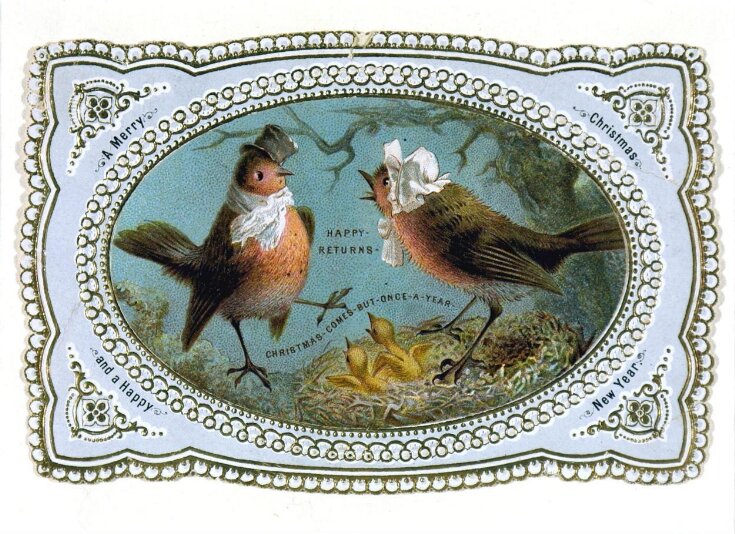
Christmas card with an illustration of two robins, Britain, ca. 1860–ca. 1880, Victoria and Albert Museum, London, UK.
Have you ever wondered why robins are such a dominant image on Christmas cards?
Apart from various religious legends, one possible reason concerns the postal system. During the Victorian era, British postmen were given the nickname “robins.” This was due to their red uniforms being likened to the bird’s red breast.
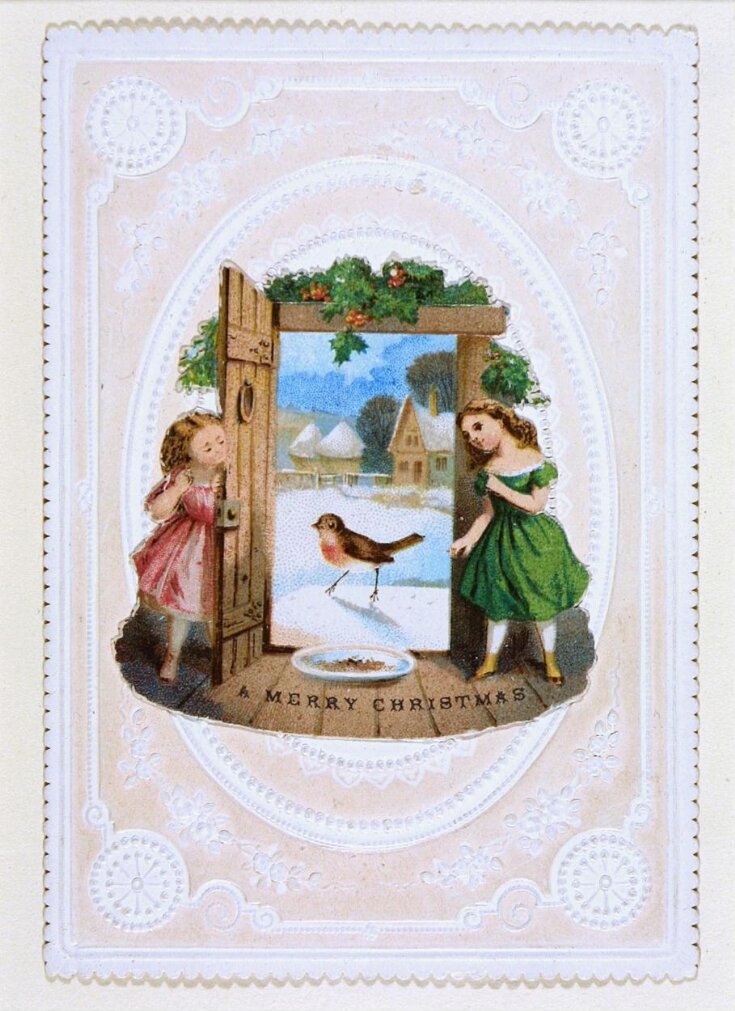
Christmas Card, Unknown (artist), Britain, c.1870s, Victoria and Albert Museum, London, UK © Victoria and Albert Museum, London.
Nowadays the red robin image has persisted—as ubiquitous a design as that Tiktok trend of a little red truck hauling a Christmas tree.
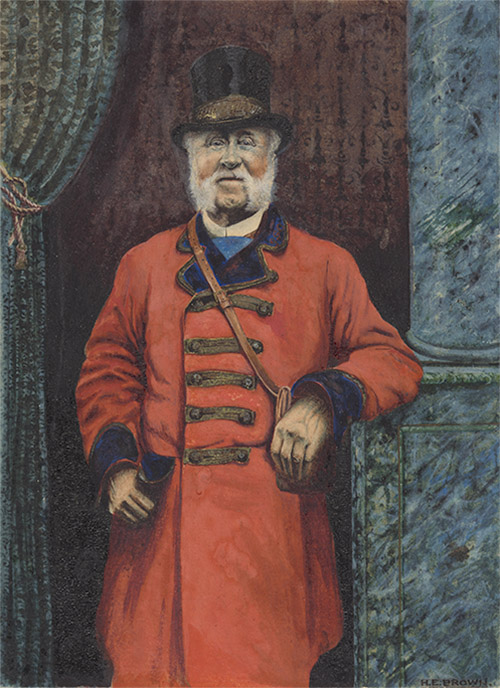
H E Brown, Moses James Nobbs: (Last of the Mail Coach Guards), Britain, c.1890, The Postal Museum, London, UK.
Newspapers also reflected the growing popularity of Victorian Christmas cards. In fact, in 1871 a newspaper complained that the amount of cards being sent was delaying business letters.
By 1873, advertisements appeared in newspapers declaring, “Mr & Mrs Blank will NOT be sending cards this year but wish all their friends a Merry Christmas.”2
Furthermore, 1879 is the earliest recorded notice of the Post Office pleading with the public to post their Christmas and New Year cards early.
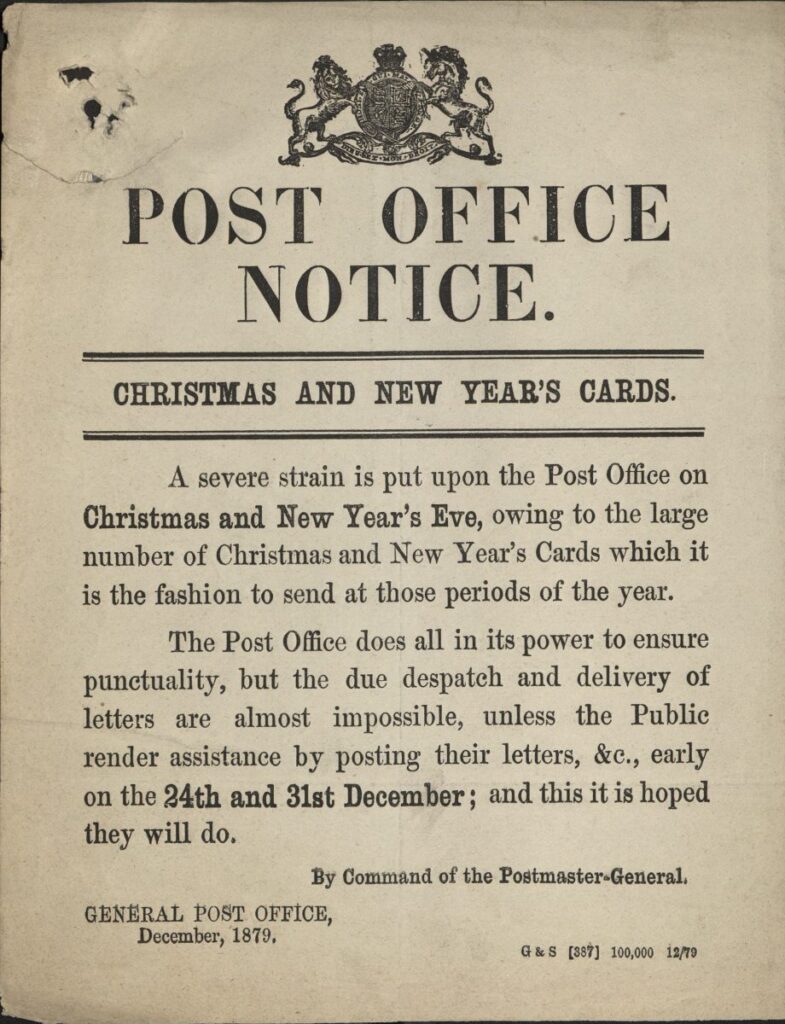
Notice re Posting Early for Christmas, Dec 1879 (POST 30/407C), Royal Mail Group, courtesy of The Postal Museum.
Back then, posting ‘early’ meant posting by Christmas Eve—a far cry from today’s dates!
You’d be forgiven for thinking that all Victorian Christmas cards depicted cosy, festive scenes. But there are some truly bizarre designs lurking alongside the standard fare of robins and snowy tableaus.
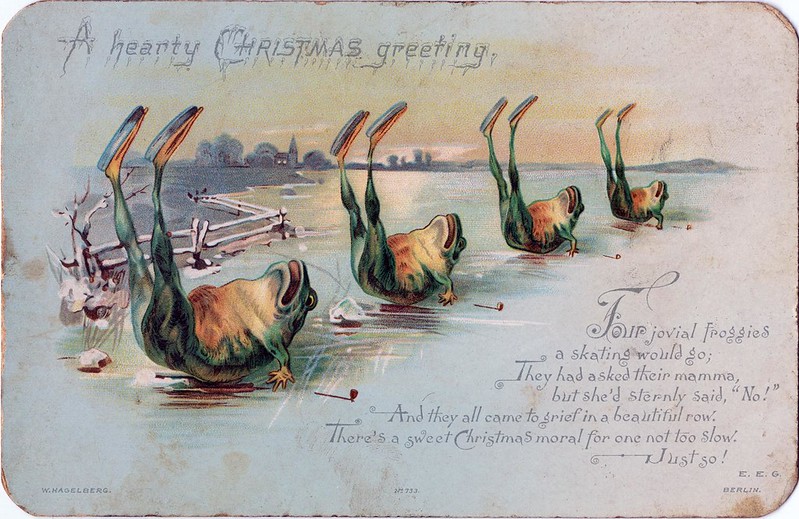
Victorian Christmas Card, Nova Scotia Archives/Flickr Creative Commons.
Many cards featured animals—and not just ones you’d typically associate with Christmas. These include, to name but a few: insects, frogs, lobsters, and other sea creatures.
One theory behind animals on Christmas cards involves the publication of a book. Rather than a Dickens tale, however, this concerns the impact Darwin’s On the Origin of Species had on the public consciousness. All life forms were a new source of fascination and intrigue.
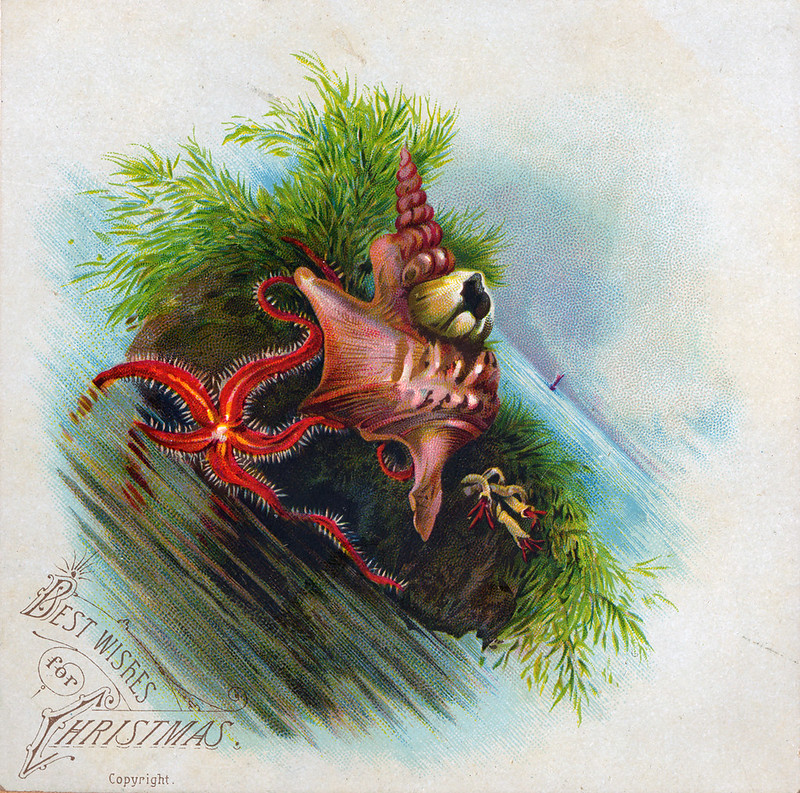
Victorian Christmas Card, Nova Scotia Archives/Flickr Creative Commons.
The Victorians came up with even more strange Christmas card designs to entertain the receiver.
For example, some cards were shaped to imitate some perhaps less than festive items.3 Your pile of Christmas mail could have resembled a five pound note, a bacon slice, an extracted tooth, a luggage label or roast mice.4
We post our letters of good cheer/Now that Christmas draws so near.
Technology has advanced dramatically since the Victorian age; we can send our holiday well wishes in the blink of an eye from our phones.
And yet, each December, post offices around the world are kept busy with Christmas cards. Perhaps there’s still something special about receiving a physical card that we don’t want to give up.
By creating Christmas cards, it seems that Victorians have given us a long lasting present: a festive tradition that’s not going anywhere anytime soon.
Terry Deary, Horrible Christmas, pp.13–14.
Deary, Horrible Christmas, p.89.
Patricia Zakreski, Aesthetics and the Victorian Christmas Card. Accessed 17 Dec 2023.
Deary, Horrible Christmas, p.68.
Terry Deary, Horrible Christmas, pp.13–14.
Deary, Horrible Christmas, p.89.
Patricia Zakreski, Aesthetics and the Victorian Christmas Card. Accessed 17 Dec 2023.
Deary, Horrible Christmas, p.68.
DailyArt Magazine needs your support. Every contribution, however big or small, is very valuable for our future. Thanks to it, we will be able to sustain and grow the Magazine. Thank you for your help!